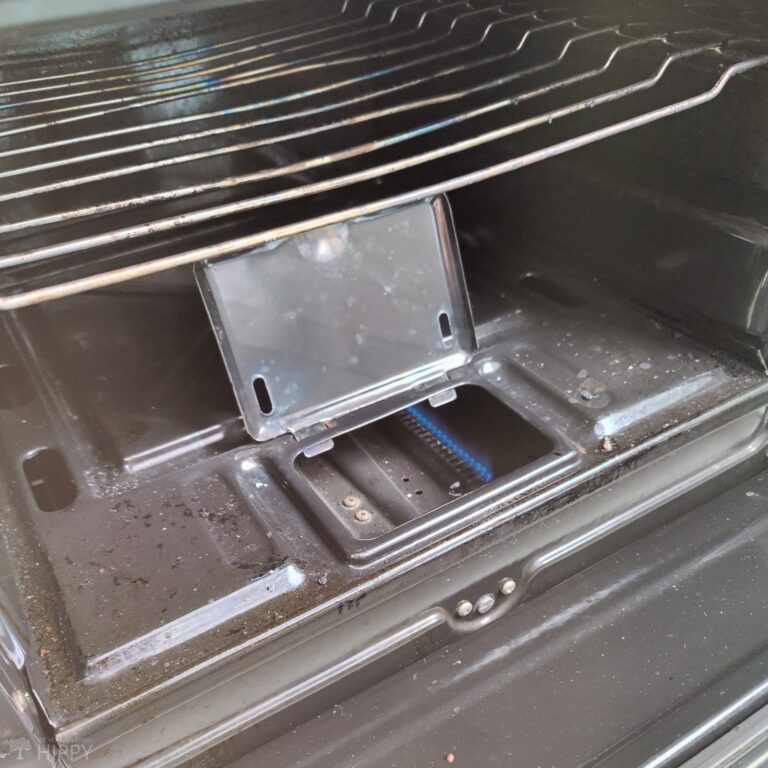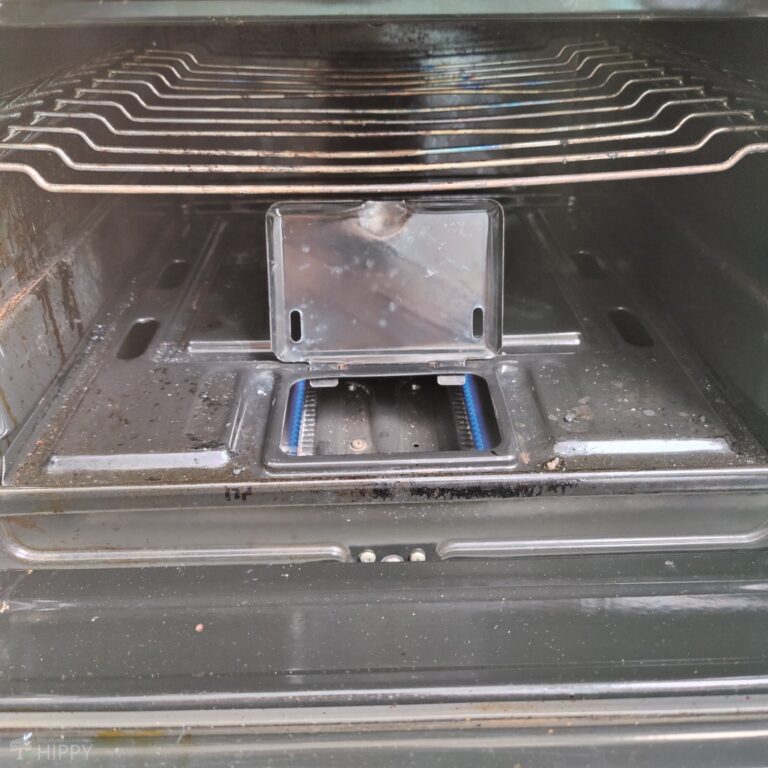If you live in an area with blistering cold winters, or perhaps you just live in a house or apartment that is drafty, poorly insulated, and always chilly, you might be tempted to try and heat your home with your gas oven.

It can certainly put out the heat, but is it a good idea? Is it safe to heat your house with a gas oven?
No, it isn’t safe to heat your house with a gas oven. Gas ovens release high amounts of dangerous carbon monoxide gas which can easily accumulate in living spaces when the oven door is open.
To put it plainly, you should never, ever do this. Not only are ovens not designed for space heating, but gas ovens in particular can be quite dangerous and produce a lot of carbon monoxide gas.
Carbon monoxide is a regular killer in the wintertime when people try ill-advised stunts like this one.
At best, you’ll be wasting a lot of fuel as gas ovens are not efficient space heaters.
Keep reading and I will tell you everything you need to know about the problem, and also provide you with some good alternative solutions.
Heating Up Your House with a Gas Oven is Not Safe
There are simply no two ways about it: using any oven for heating your home space is a bad idea, but using a gas oven for the purpose is particularly dangerous.
Whether you’re oven is fueled by natural gas or propane, the result is the same.
When the oven is in operation, that is burning, it is releasing carbon monoxide gas as a byproduct of combustion.
We will talk more about carbon monoxide gas in just a moment, but all you need to know for now is that it is insidious and deadly when it builds up inside enclosed, poorly vented spaces. Each year this gas kills hundreds of people accidentally.
Unfortunately, many of those deaths are attributed to people who are inappropriately using combustion appliances inside their home, be it a grill, motor, or oven. That definitely includes your gas oven in your kitchen.
Worse yet, there is no gas oven that I know of that features any sort of carbon monoxide detection capability, emergency cutoffs, or anything like that.
You should definitely have a carbon monoxide detector inside your living space alongside a typical smoke detector, but you’re not going to have any good way to know how much carbon monoxide gas your oven is generating on an hourly basis.
Carbon Monoxide Will Kill You
Okay. Carbon monoxide: Let’s talk about it. Trust me when I say I have not overhyped the danger that this odorless, colorless, and tasteless gas represents.
Carbon monoxide, or CO, gas can straight up kill you in sufficient concentrations, and it has a way of building up in the body over time as it is inhaled.
The symptoms, if you’re paying attention, or recognizable and it is possible to self-rescue so long as you are awake to take action.
In the beginning, co-poisoning might feel a lot like a cold or flu. Victims will often complain of feeling tired, achy, and slightly short of breath.
Headache and dizziness are also common. As CO concentrations in the blood continue to rise confusion and loss of coordination will set in, followed by coma and eventually death.
Many victims of CO poisoning die in their sleep, completely unaware of what is happening to them.
Imagine the scenario: you fire up your gas oven to help warm up your drafty, chilly home and then get tucked into bed to go to sleep.
Overnight, carbon monoxide levels build and build, poisoning you. Eventually, it reaches lethal levels and you die in your sleep.
It sounds tragic, and it is, but that is the fate of many people who suffer from carbon monoxide poisoning yearly from circumstances that are very similar to the theoretical one I described.
Let me be as clear as I possibly can: using your gas oven for heating your home is not safe!
You should have a carbon monoxide gas detector installed in a recommended location to monitor the buildup of carbon monoxide gas in any case.

Even if it Was Safe, Gas Ovens are Not Designed for Continual Use
Another thing you should know if you are depending upon your gas oven as supplemental or emergency heating in cold weather.
These ovens are not designed to be run continuously, and even the ones that can run for a long time are not efficient at heating a room.
First, leaving your oven running on full blast with the door open is going to use up a ton of fuel. Again, setting aside the carbon monoxide problem for a moment.
Beyond this, running your oven wide open for 12 hours or more, potentially even leaving it burning for days at a time might damage its components.
Also, as a result of the combustion of process the humidity in the room is going to go up also.
You might be raising the temperature, but you’ll also be raising the humidity level and this moisture can make you feel even colder if you are anywhere that the heat doesn’t reach.
Sure, it might be nice to crack the door on a blazing oven and bask in that sizzling air that is coming out when you are chilly, and there is no harm in opening the door to let the heat out of an oven when you are done using it, but it is just not going to be an efficient way to meaningfully warm up your living space.
Use Proven Alternatives if You Need Extra Heat
If your home or apartment just stays cold all the time, you have proven, safe options for supplemental or emergency heating.
You are well advised to use any of them before you try to rely on your gas oven for the same purpose.
One of the most charming, traditional, and proven methods of supplemental heat is a fireplace.
Though you might not have the wherewithal or the ability to have a fireplace installed, if your home has a fireplace, even one that is not used, you can spend a little bit of money getting it inspected and brought back into good repair so you can get a toasty fire going.
This will easily keep one room in the house at least comfortably warm.
Another good option and one that can be placed anywhere it has power is an electric space heater.
Although they use a lot of electricity, there are generally quite safe, adaptable, and reliable for long-term use.
Slightly less safe and requiring ventilation but highly efficient and capable of warming up multiple rooms is a kerosene heater.
Reliable, easy to operate, and it generally affordable so long as you have a good source of fuel, a kerosene heater might be a great emergency prep if you are worried about seriously cold weather.
Lastly, you don’t need to struggle on with options like this if you know you are facing cold weather or particularly cold winters.
For a small investment, it is possible to install a wood stove that can give you the localized and intense heat of a fireplace in a far more convenient and safer appliance.
As you might expect, they require professional installation, testing, and maintenance but are one of the most adaptable and reliable options for supplemental or even primary heating.
Tom has built and remodeled homes, generated his own electricity, grown his own food and more, all in quest of remaining as independent of society as possible. Now he shares his experiences and hard-earned lessons with readers around the country.
Find out more about the team here.
